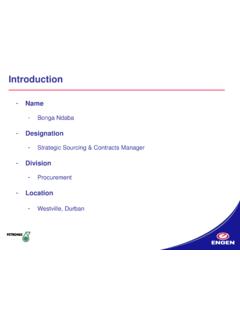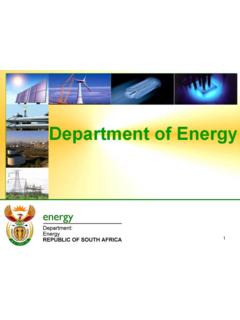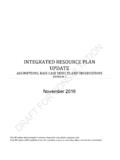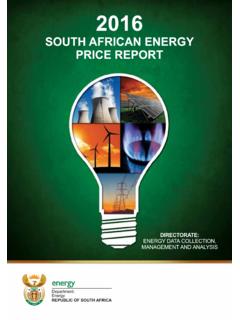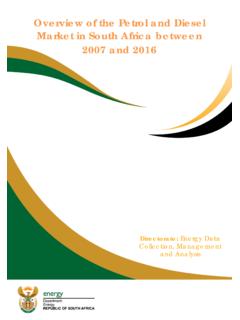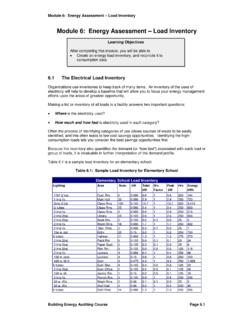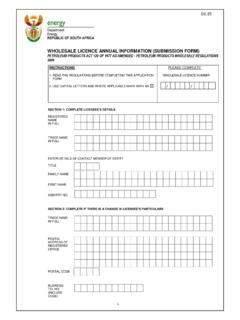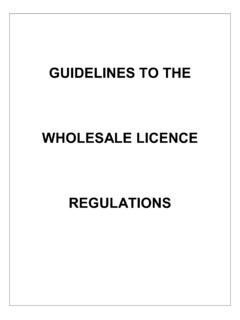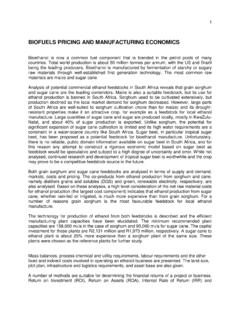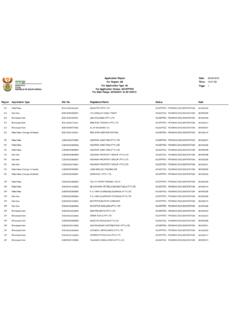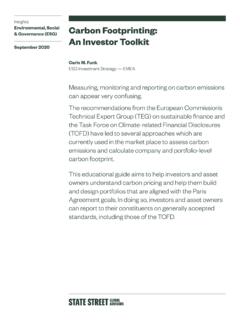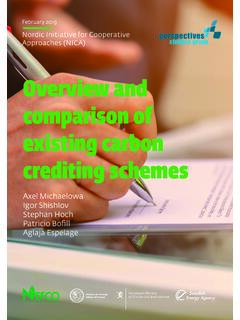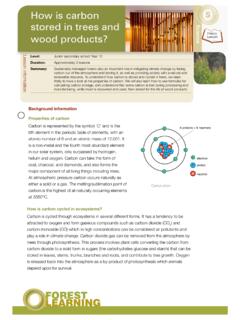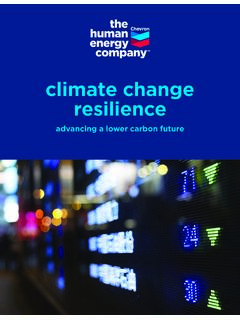Transcription of SOUTH AFRICAN CARBON OFFSETS PROGRAMME: DRAFT …
1 SOUTH AFRICAN CARBON OFFSETS PROGRAMME: DRAFT FRAMEWORK. FOR APPROVAL OF DOMESTIC STANDARDS FOR PUBLIC COMMENT. JANUARY 2022. 1. A- 1. INTRODUCTION .. 3. 2. SUMMARY OF FRAMEWORK STRUCTURE AND PROCESS .. 6. 3. PRINCIPLES AND GOALS OF FRAMEWORK .. 8. Ensure Environmental integrity .. 8. Lower Transaction Costs .. 9. Accommodate SOUTH Africa-Specific Projects .. 11. Provide Transparency .. 11. Accommodate Social, Economic, and Environmental Goals for Co-Benefits .. 11. Withstand International Scrutiny .. 12. 4. DEFINITION AND COMPONENTS OF A STANDARD .. 13. Standards in Practice .. 13. Components of a Standard under the SOUTH Africa CARBON Offset 15.
2 5. STANDARDS EVALUATION 18. Governance and Administration .. 18. Environmental integrity .. Error! Bookmark not defined. Social, Economic, and Environmental Effects .. 21. 6. PROCEDURES FOR APPLICATION OF THE FRAMEWORK .. 23. Framework Institutional Design .. 23. Framework Implementation and Presentation of Results .. 26. A. GLOSSARY .. 32. B. COMMON ELEMENTS OF CARBON OFFSET STANDARDS .. 34. C. DRAFT APPLICATION OF FRAMEWORK TO INTERNATIONAL STANDARDS .. 37. 2. A- 1. INTRODUCTION. SOUTH Africa introduced a CARBON Tax in June 2019, as one of the mix of measures for supporting climate change mitigation action. A key design feature of the CARBON tax is the CARBON offset allowance which provides flexibility to firms to reduce their CARBON tax liability by either 5 or 10 per cent of their total greenhouse gas (GHG) emissions by investing in projects that reduce their emissions.
3 The CARBON offset system seeks to encourage GHG emission reductions in sectors or activities that are not directly covered by the tax. Investments in public transport, agriculture, forestry and other land use (AFOLU). and waste sectors are likely to qualify. CARBON OFFSETS involve specific projects or activities that reduce, avoid, or sequester emissions, and are developed and evaluated under specific methodologies and standards, which enable the issuance of CARBON credits. During the first phase of the CARBON tax, CARBON offset projects developed under three international CARBON OFFSETS standards, namely the Clean Development Mechanism (CDM) 1; Verified CARBON Standard (VCS) and Gold Standard (GS) are eligible for use by companies to reduce their CARBON tax liability.
4 Scope is also given for domestic SOUTH AFRICAN standards/ methodologies approved by the Minister responsible for Energy or delegated authority to be utilised in subsequent phases of the CARBON tax. Eligible OFFSETS to reduce CARBON tax liability from the approved standards should first be cancelled in the originating registry before transfer and registration into the SOUTH Africa's CARBON Offset Administration System (COAS), administered by the Designated National Authority in the Department of Mineral Resources and Energy (DMRE) which issues retirement certificates for CARBON tax OFFSETS . SOUTH Africa updated its Nationally Determined Contributions (NDCs) under the Paris Agreement, in its commitment to reduce emissions, increase its ambition and to contribute to global efforts to curb emissions and also submitted its aspirational commitment of reaching a net zero CARBON economy by 2050 through the SOUTH Africa's Low Emissions Development Strategy (SA-LEDS).
5 The CARBON OFFSETS system within the CARBON tax policy is a key policy measure to cost effectively lower GHG emissions and achieve the NDCs to mitigate climate change impacts and deliver on the committed targets. There is also need to ensure that local CARBON OFFSETS projects generate sustainable development benefits and employment opportunities in SOUTH Africa by mobilising investments in energy efficiency and renewable energy, rural development projects, and initiatives aimed at restoring landscapes, reducing land degradation and biodiversity , the finalisation of the rules for international CARBON markets under Article 6 in Glasgow at COP26 in November 2021 is welcomed as it could create significant opportunities through cooperation between countries on market mechanisms.
6 Which are essential for ensuring cost effective and absolute emission reductions across borders. The key issues out of COP26 focused on the adoption of: comprehensive rules for a new CARBON crediting mechanism under Article with the supervision of a UN body where 5% of the share of proceeds must be transferred to the Adaptation Fund and additional cancellation for the benefit of the atmosphere of 2% of the CARBON credits, referred to as overall mitigation in global emissions (OMGE) is mandatory;. comprehensive accounting rules for the international transfer of CARBON market units under Article in a manner that allows the country that generates a credit to decide whether to sell the credit to other nations or to count towards their own climate targets to meet their NDCs.
7 If a sale of the credits is authorised, then corresponding adjustments need to be carried out by both seller (add emission units sold) and buyer (subtracts emission units purchased) countries to their emissions tallies to avoid double counting. The share of proceeds from the credits sales under Article are not mandated to contribute towards the Adaptation Fund and OMGE;. 1 Or the replacement mechanism as agreed under the Paris Agreement Article 6 negotiations. 3. CDM projects are allowed to transition to the new mechanism under Article and Certified Emission Reductions (CERs) issued under the CDM from 2013-2020 could be used to meet the first NDCs commitment period.
8 In light of the above developments under Article 6, for eligible credits that have been developed under the CDM and successor mechanism, some of the stipulations within the current CARBON Offset Regulations including crediting periods, renewals, registry systems or cut-off dates for eligible OFFSETS etc. should be reviewed to ensure alignment with the new rules under the Article 6 successor mechanism once finalised. With the development of the new rules on the international CARBON markets, there is still need to ensure there is no proliferation of cheap quality credits into the system by ensuring environmental integrity, robust accounting and promotion of sustainable development, which will effectively be implemented by governments.
9 Therefore, use of CARBON offsetting as the last resort in mitigation hierarchy while capping OFFSETS use within CARBON pricing instruments should be strengthened while governments are encouraged to develop robust domestic criteria and local standard frameworks to mitigate potential loopholes that could undermine climate mitigation efforts. A domestic standard will help create jobs, develop capacity within local institutions, reduce reliance on international standards, cater for small-scale and micro community projects and unlock mitigation potential in the AFOLU sector, which are not well covered by international standards, starting in 2023.
10 This DRAFT paper provides guidance on the development of a framework for potential domestic standards which is being consulted on to ensure generation of CARBON credits which can be used as part of SOUTH Africa's approach to Articles and of the Paris Agreement. The DRAFT framework being consulted on is proposed to guide the development, assessment, and approval of potential eligible domestic CARBON offset standards. This framework sets out the requirements, criteria for the selection, evaluation and approval of domestic standards to complement the three international standards while balancing the government's interests in protecting the integrity of its GHG emissions mitigation objectives and minimizing the administrative burden it places on government administrators, standard developers, project developers, and other stakeholders and participants.
